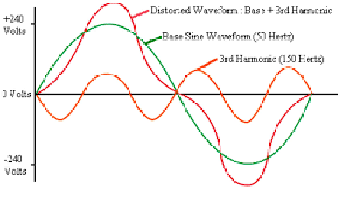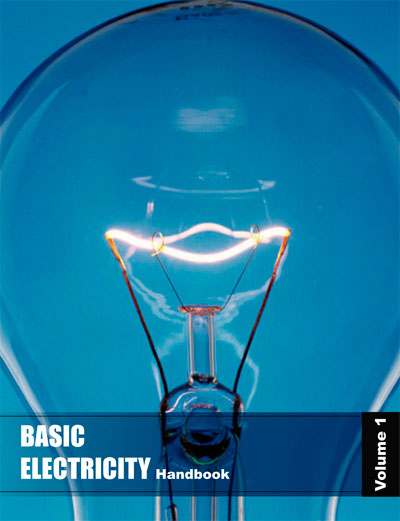
Harmonic distortion is not a new phenomenon on power systems. Concern over distortion has ebbed and flowed a number of times during the history of ac electric power systems. Scanning the technical literature of the 1930s and 1940s, one will notice many articles on the subject. Then the primary sources were the transformers and the primary problem was inductive interference with open-wire telephone systems. The forerunners of modern arc lighting were being introduced and were causing quite a stir because of their harmonic content—not unlike the stir caused by electronic power converters in more recent times.
In contrast, voltage sags and interruptions are nearly universal to every feeder and represent the most numerous and significant power quality deviations. The end user sector suffers more from harmonic problems than the utility sector. Industrial users with adjustable speed drives, arc furnaces, induction furnaces, and the like, are much more susceptible to problems stemming from harmonic distortion.
A good assumption for most utilities in the United States is that the sine wave voltage generated in central power stations is very good. In most areas, the voltage found on transmission systems typically has much less than 1% distortion. However, the distortion increases closer to the load. At some loads, the current waveforms barely resemble a sine wave. Electronic power converters can chop the current into seemingly arbitrary waveforms.
Harmonics have existed in power systems since the first generators. However, the harmonic components were so small that their effects on systems were negligible. This was due to the lack of non-linear loads before the 1960s. Wollongong, V.J. Gosbell, associated professor, “Harmonic distortion is not generally due to the operation of the power system, and was largely absent before the 1960s. At about this time, a different type of customer load with electronic power supplies became popular.” This was the beginning of the era of non-linear loads which now include electronics ballasts, computer power supplies, fax machines, arc furnaces and variable frequency drives (VFDs). Harmonic distortion can have detrimental effects on electrical equipment. Unwanted distortion can increase the current in power systems which results in higher temperatures in neutral conductors and distribution transformers. Higher frequency harmonics cause additional core loss in motors which results in excessive heating of the motor core. These higher order harmonics can also interfere with communication transmission lines since they oscillate at the same frequencies as the transmit frequency. If left unchecked, increased temperatures and interference can greatly shorten the life of electronic equipment and cause damage to power systems.
Harmonic Distortion
Harmonic distortion is caused by nonlinear devices in the power system. A nonlinear device is one in which the current is not proportional to the applied voltage. Figure 1 illustrates this concept by the case of a sinusoidal voltage applied to a simple nonlinear resistor in which the voltage and current vary according to the curve shown. While the applied voltage is perfectly sinusoidal, the resulting current is distorted. Increasing the voltage by a few percent may cause the current to double and take on a different waveshape. This is the source of most harmonic distortion in a power system. Figure 1 illustrates that any periodic, distorted waveform can be expressed as a sum of sinusoids. When a waveform is ideitical from one cycle to the next, it can be represented as a sum of pure sine waves in which the frequency of each sinusoid is an integer multiple of the fundamental frequency of the distorted wave. This multiple is called a harmonic of the fundamental, hence the name of this subject matter. The sum of sinusoids is referred to as a Fourier series, named after the great mathematician who discovered the concept.
Fig. 1. Current distortion caused by nonlinear resistance
Voltage and Current Distortion
The term "harmonics" is often used by itself without further qualification. Generally, it could mean one of the following three:
Clearly, there are separate causes and effects for voltages and currents as well as some relationship between them. Thus, the term harmonics by itself is inadequate to definitively describe a problem. Nonlinear loads appear to be sources of harmonic current injecting harmonic currents into the power system. For nearly all analyses, it is sufficient to treat these harmonic-producing loads simply as current sources. There are exceptions to this as described later.
Fig 2. Harmonic currents flowing through the system impedance results in harmonic voltages at the load.
Voltage distortion is the result of distorted currents passing through the linear, series impedance of the power delivery system as illustrated in Fig. 2. Although assuming that the source bus is ultimately a pure sinusoid, there is a nonlinear load that draws a distorted current. The harmonic currents passing through the impedance of the system cause a voltage drop for each harmonic. This results in voltage harmonics appearing at the load bus. The amount of voltage distortion depends on the impedance and the current. Assuming the load bus distortion stays within reasonable limits (e.g., less than 5%), the amount of harmonic current produced by the load is generally constant.
While the load current harmonics ultimately cause the voltage distortion, it should be noted that load has no control over the voltage distortion. The same load put in two different locations on the power system will result in two different voltage distortion values. Recognition of this fact is the basis for the division of responsibilities for harmonic control that are found in standards such as IEEE Std 519-1992.
One must be careful when describing harmonic distortion phenomena to understand that there are distinct differences between the causes and effects of harmonic voltages and currents. The use of the term harmonics should be qualified accordingly. By popular convention in the power industry, the majority of time the term is used by itself when referring to load apparatus, the speaker is referring to the harmonic currents. When referring to the utility system, the voltages are generally the subject.

This 100+ page e-book is a great guide for those who have a basic interest in the field of electricity. This well-illustrated e-book, coupled with some basic knowledge of electricity, will give you a broad theoretical background in this fundamental subject.
CONTENTS